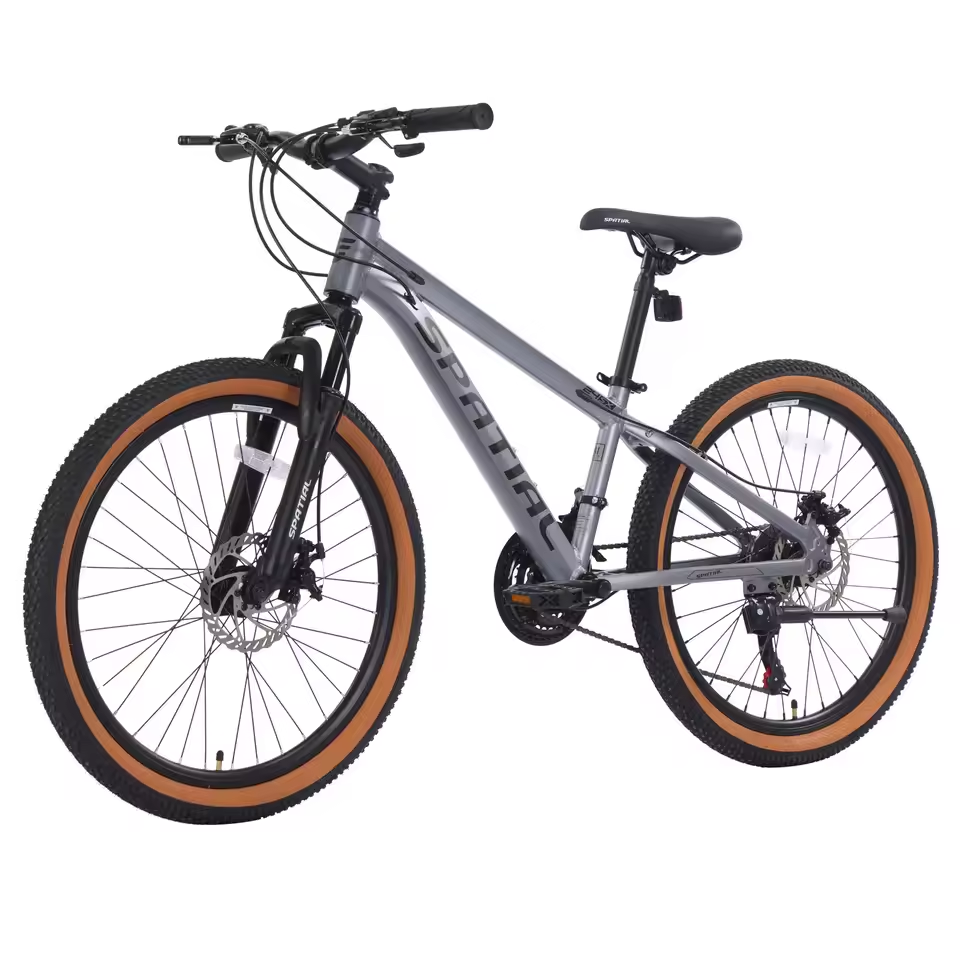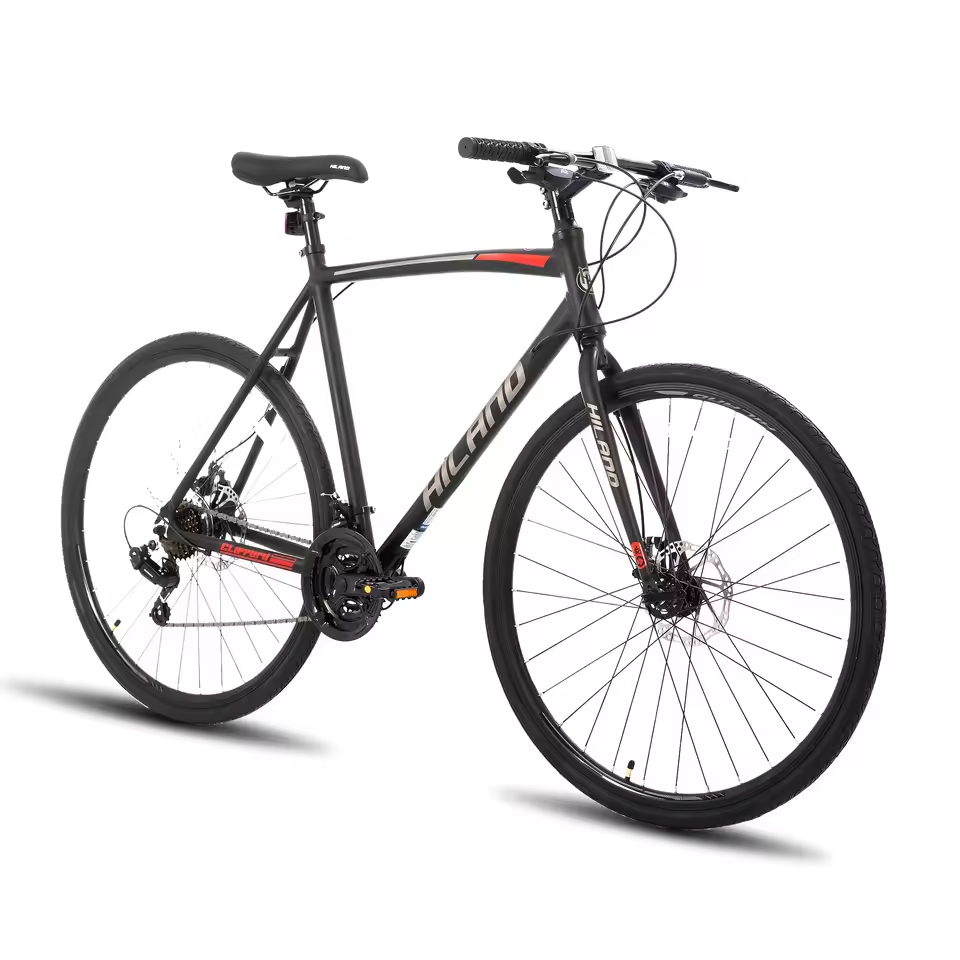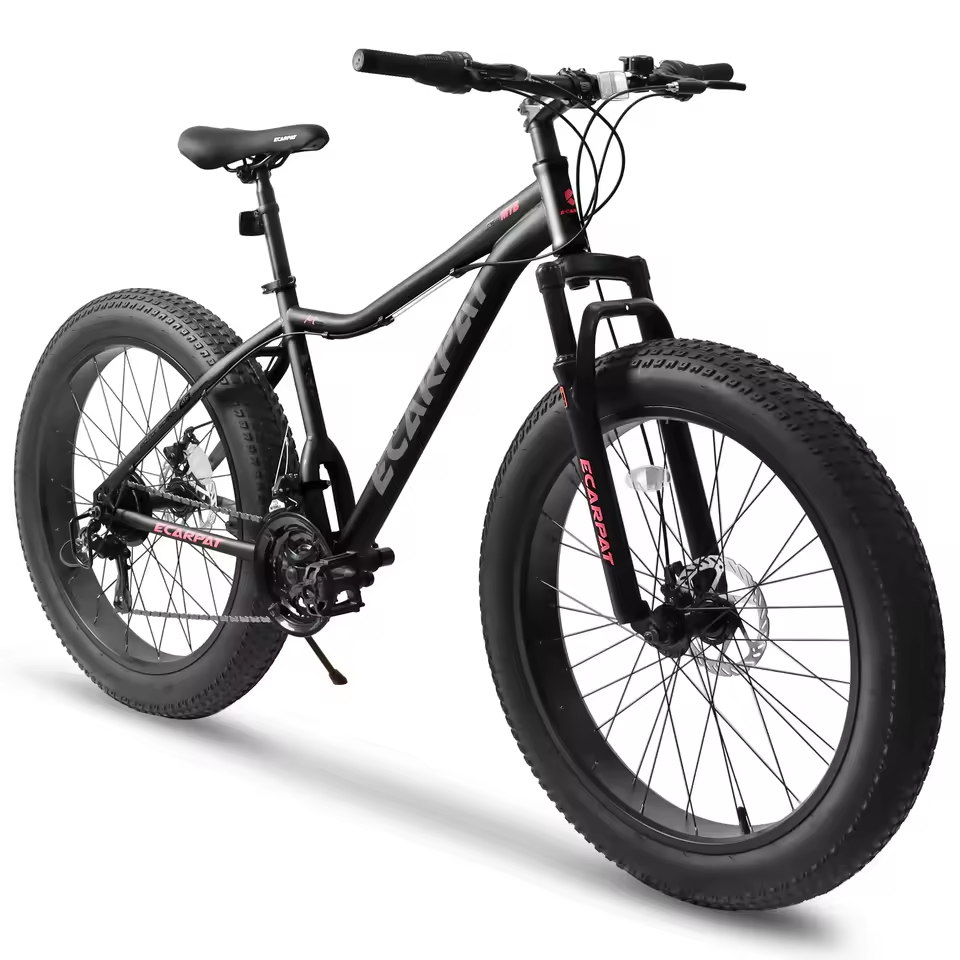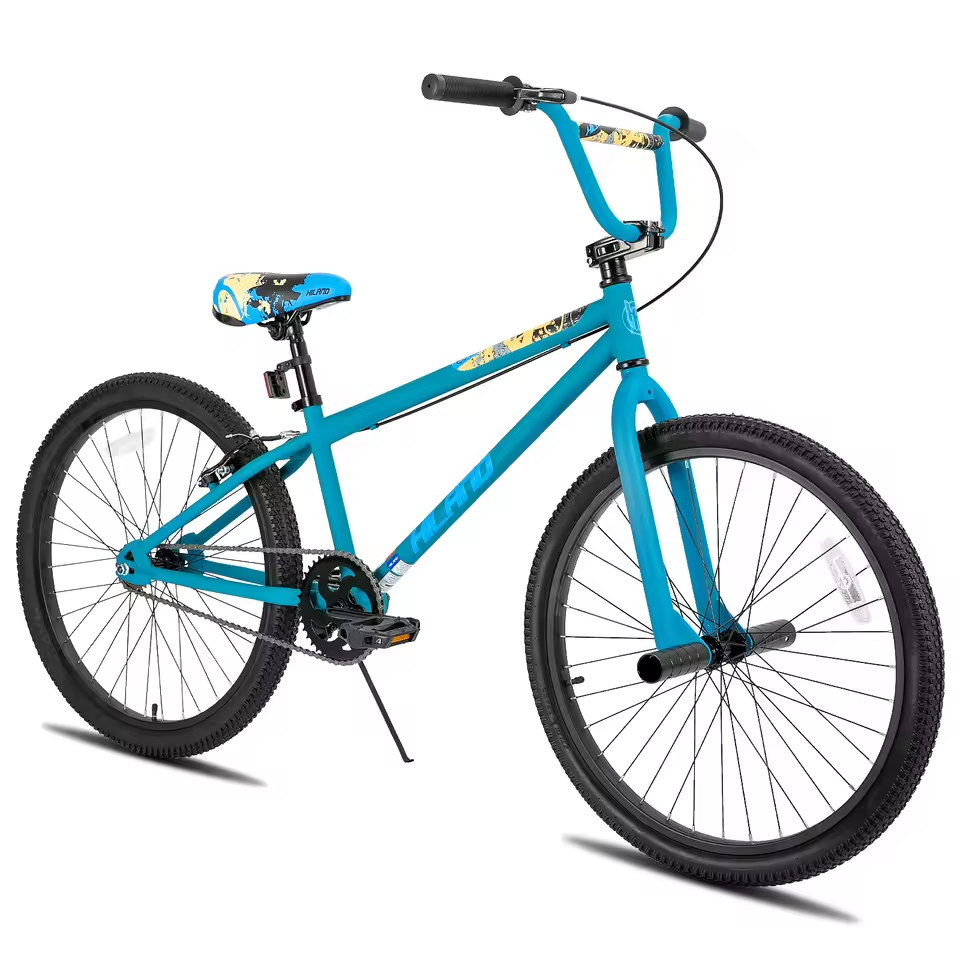Introduction: The Rise of the Performance Bicycle
The performance bicycle has transcended its origins as a simple utility tool, evolving into a symbol of innovation, athleticism, and sustainable living. Over the past two decades, advancements in materials science, aerodynamics, and design have propelled these machines into the realm of high-tech precision.
1. Technological Breakthroughs
Carbon fiber frames, once reserved for elite athletes, now dominate the market. Their lightweight yet rigid structure improves power transfer, while 3D-printed components and wind-tunnel-tested geometries redefine speed and efficiency. Innovations like electronic shifting systems (e.g., Shimano Di2) and tubeless tires have further enhanced reliability and performance.
2. Market Growth and Diversification
The global performance bicycle industry is projected to hit $78 billion by 2030 (Statista, 2023). This surge is driven by:
- Road Racing: Professional cyclists demand ultra-light frames for Tour de France-level competition.
- Adventure Riding: Gravel bikes and e-bikes bridge the gap between pavement and off-road exploration.
- Urban Commuting: Foldable and electric models (e.g., chopper bicycle-style hybrids) appeal to eco-conscious city dwellers.

3. Health and Environmental Drivers
The pandemic accelerated this trend, with 40% of cyclists citing fitness as their primary motivation (Bike Industry Research, 2022). Meanwhile, governments incentivize cycling as a low-carbon alternative to cars, reducing urban emissions by an estimated 12% in bike-friendly cities like Copenhagen.
4. Future Frontiers
Sustainability is reshaping the industry:
- Recycled carbon fiber and bamboo frames cut waste.
- Smart integration (GPS, power meters) turns bikes into data-driven tools for training.
Types of Performance Bicycles: Road vs. Mountain vs. Hybrid
The world of performance bicycles is as diverse as the riders who use them. Choosing between a road, mountain, or hybrid model depends on your goals, terrain, and riding style. Here’s a deep dive into each type:
1. Road Bicycles: Speed and Efficiency
Design:
- Lightweight frames (often carbon fiber or aluminum).
- Narrow tires (23–28mm) for minimal rolling resistance.
- Aggressive geometry with drop handlebars for aerodynamic positions.
Components:
- High-end drivetrains (e.g., Shimano Ultegra, SRAM Red).
- Rigid forks for power transfer.
Use Cases:
- Paved routes, racing, or endurance rides.
- Ideal for those prioritizing speed (e.g., Gran Fondo events).
2. Mountain Bicycles: Off-Road Dominance
Design:
- Sturdy frames (aluminum or steel) to handle impacts.
- Wide, knobby tires (2.0–2.4 inches) for grip on trails.
- Suspension forks (or full-suspension frames) for shock absorption.
Components:
- Robust disc brakes for steep descents.
- Wide-range gearing (e.g., 1×12 setups) for variable terrain.
Use Cases:
- Trails, dirt paths, or technical singletrack.
- Popular for adventure seekers and downhill enthusiasts.
3. Hybrid Bicycles: The Middle Ground
Design:
- Balanced geometry for comfort and agility.
- Medium-width tires (32–45mm) for pavement and light off-road.
- Flat or upright handlebars for relaxed posture.
Components:
- Rigid or light suspension forks for rougher paths.
- Versatile gearing suitable for commuting and weekend trails.
Use Cases:
- Urban commuting, mixed terrain, or casual recreation.
- Perfect for riders who want one bike for multiple purposes.

Frame Materials: Carbon Fiber vs. Aluminum vs. Steel
The choice of frame material is pivotal for a performance bicycle, impacting weight, durability, and ride quality. Here’s a breakdown of the three most common options:
1. Carbon Fiber: The High-End Choice
- Pros:
- Lightweight: Reduces fatigue on long rides.
- Aerodynamic: Smooth shapes cut wind resistance (e.g., Trek’s Madone).
- Tailorable Stiffness: Engineers can tune flex points for optimal power transfer.
- Cons:
- Cost: Premium price tags ($1,500+).
- Brittle: Prone to damage in crashes; repairs are complex.
Best For: Racers, triathletes, or riders prioritizing speed.
2. Aluminum: The Balanced Option
- Pros:
- Affordable: Cost-effective for mid-range performance bicycles.
- Durable: Resists denting and corrosion (e.g., Giant Defy series).
- Rigid: Efficient power transfer for climbing.
- Cons:
- Stiff Ride: Can feel harsh on rough terrain without suspension.
- Heavier Than Carbon: Adds 100–300g depending on gauge.
Best For: Commuters, gravel riders, or budget-conscious enthusiasts.
3. Steel: The Classic Reliant
- Pros:
- Comfort: Absorbs vibrations for smooth rides (e.g., Surly Kraken).
- Repairable: Welds easily compared to carbon.
- Timeless: Custom builds retain resale value.
- Cons:
- Heavy: Adds 500–800g compared to aluminum.
- Prone to Rust: Requires rustproof coatings (e.g., chrome-moly alloys).
Best For: Touring cyclists, vintage-style builds, or off-road adventures.
Critical Components for Optimal Performance
- Drivetrain:
- 1x vs. 2x gearing systems.
- Shimano Ultegra vs. SRAM Force for smoother shifts.
- Brakes:
- Disc brakes offer superior stopping power in all weather.
- Road bikes often use rim brakes for weight savings.
- Wheels and Tires:
- Deep-section aero wheels for time trials.
- Tubeless tires reduce flats and improve traction.
Choosing the Right Size: Fit Over Fashion
A performance bicycle that’s too small or too large can turn a thrilling ride into a painful experience. Proper sizing ensures comfort, efficiency, and injury prevention—here’s how to prioritize fit over trends:
1: Measure Your Body
- Stature:
- Stand over the top tube: Leave 1–3 inches of clearance (less for road bikes, more for mountain).
- Inseam:
- Convert to frame size using charts (e.g., 28-inch inseam ≈ 54cm road bike).
- Arm Length:
- A longer torso may require a “compact” geometry for better reach.
2: Test Ride with Precision
- Seated Position:
- Knees should extend nearly straight at the bottom of the pedal stroke.
- Hips shouldn’t rock side-to-side.
- Handlebars:
- Elbows should bend slightly for shock absorption.
- Avoid overreaching for an aggressive “pro” look—it strains your back.
3: Adjustable Components
- Seat Height:
- Ball of foot aligns with pedal crank when pedals are horizontal.
- Saddle Fore/Aft:
- Knees track straight (not inward/outward) during pedaling.
- Handlebar Width:
- Match shoulder width for optimal leverage.
Common Mistakes to Avoid
- Too Short: Forces hunched posture, stressing knees and lower back.
- Too Tall: Creates instability on descents.
- Ignoring Adjustments: Even the “right” size needs fine-tuning.
Terrain-Specific Performance Bicycles
The best performance bicycle adapts to the terrain you ride. Here’s how to match your environment with the right build:
1. Road Bikes: Paved Perfection
- Tires: Narrow (23–28mm) for minimal rolling resistance.
- Geometry: Aggressive, aerodynamic frames (e.g., Trek Madone).
- Ideal For: Long-distance races, group rides, or scenic pavement routes.
2. Mountain Bikes: Off-Road Mastery
- Tires: Knobby, tubeless-ready (2.2–2.4 inches) for traction.
- Suspension: 100–150mm front forks (full suspension for rocky trails).
- Best On: Singletrack, dirt jumps, or downhill trails.
3. Gravel/Adventure Bikes: The Hybrid Hero
- Tires: Wide (35–45mm) to handle pavement and loose gravel.
- Frame: Clearance for larger tires, rugged build.
- Use Case: Cross-country tours, rough roads, or light trails.
4. Electric-Assist (e-Bikes): Power for Any Surface
-
- Motor Types: Rear hub (commuting) or mid-drive (off-road).
- Range: 50–100+ miles on a single charge.
- Perfect For: Hilly commutes or endurance rides without fatigue.

Brand Comparison: The Best Performance Bicycle Brands
The performance bicycle market is dominated by brands offering cutting-edge technology and design. Here’s a quick guide to top contenders:
1. Specialized
- Strength: Aerodynamic road bikes (e.g., Spearfish, Venge).
- Innovation:专利的 Future Shock suspension for comfort.
- Best For: Racers and tech-driven cyclists.
2. Trek
- Flagship Models: Madone (road), Fuel EX (mountain).
- Signature Tech: OCLV carbon for stiffness and lightness.
- Strength: Balanced performance across categories.
3. Cannondale
- Iconic Design: Lefty fork on mountain bikes, SmartForm aluminum.
- Best Known For: Synapse gravel bikes and SuperSix EVO road models.
- USP: Aggressive geometry for speed.
4. Giant
- Range: Affordable to premium (e.g., TCR Advanced, Trance X).
- Focus: Rider-first engineering for all budgets.
- Ideal For: Beginners and mid-level enthusiasts.
5. Trek’s Rival: Pinarello
-
- Road Focus: Dogma F12 for pro racers.
- Material: Aero-shaped carbon for speed.
- Best For: Sprinters and time trialists.
Customization and Upgrades: Enhancing Your Performance Bicycle
Maximizing your performance bicycle’s potential involves smart upgrades. Here’s how to optimize for speed, comfort, or terrain:
1. Wheels and Tires
- Lightweight Wheels: Carbon rims reduce rotational weight (e.g., Zipp 808).
- Tire Switches:
- Road: 25–28mm for rolling efficiency.
- Gravel: 40–45mm for grip (e.g., Panaracer Gravel King).
2. Drivetrain Upgrades
- Higher-End Shifters: SRAM eTap AXS for wireless precision.
- Narrow-Wide Chains: Prevent slippage on technical trails.
3. Aerodynamic Add-ons
- Aero Bars: For time trial or triathlon setups.
- Seatpost/Tail: Carbon models cut drag without sacrificing comfort.
4. Brakes and Suspension
- Hydraulic Discs: Boost stopping power on all terrains.
- Fork Upgrades: RockShox SID for mountain bikes needing extra suspension.
5. Tech Integration
- Power Meters: Stages or SRM for data-driven training.
- GPS Computers: Wahoo ELEMNT for route mapping and metrics.
Budget Tips
- Prioritize components that directly impact your riding pain points (e.g., stiff wheels for climbing).
- Use brands like Thule or Topeak for affordable accessories.
Every upgrade should enhance your ride—invest where it matters most to unlock your performance bicycle’s full potential.
Maintenance Tips for Long-Term Performance
Regular upkeep ensures your performance bicycle stays reliable and efficient. Follow these steps to extend its lifespan:
1. Clean After Every Ride
- Wipe Down: Use a microfiber cloth to remove mud/dirt.
- Chain Care:
- Degrease and re-lube every 100 miles (use dry lube for gravel, wet for rainy climates).
- Replace if rusty or noisy.
2. Check Tires and Pressure
- Inflate Regularly: Use a gauge—road tires (80–130 PSI), gravel (40–60 PSI).
- Inspect Treads: Replace if worn or damaged.
- Tubeless Setup: Fix sealant leaks every 3 months.
3. Inspect Components
- Brakes: Ensure pads aren’t worn (gap <1mm = replace).
- Cables: Replace frayed ones to avoid sudden failure.
- Quick Releases/Screws: Tighten before every ride.
4. Seasonal Storage
- Winter Storage: Hang bikes off the ground; apply silicone spray to prevent rust.
- Battery Care (for e-bikes): Charge to 50% before storage.
5. Professional Servicing
- Annual Tune-Up: Include bearing lubrication and drivetrain inspection.
- Warranty Check: Most brands cover defects for 1–2 years.
Common Mistakes to Avoid
-
- Over-Lubing Chains: Excess grease attracts dirt.
- Ignoring Squeaks/Noises: Early repairs prevent major damage.